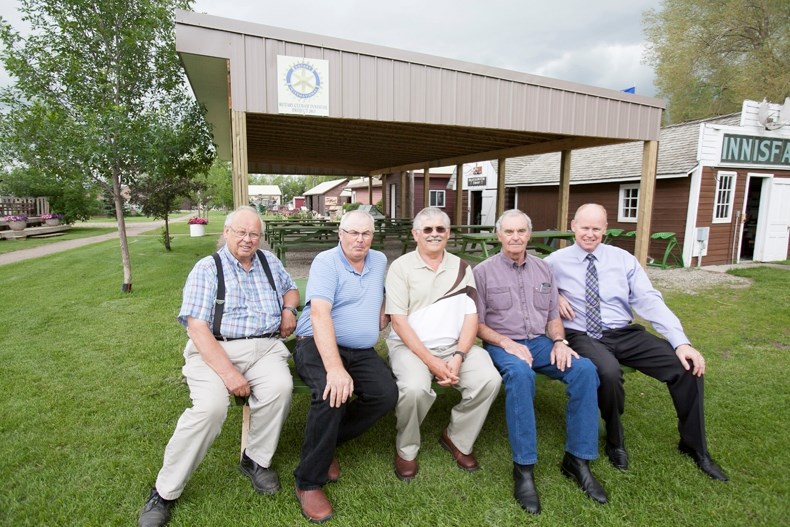There has been plenty of moisture and rain this spring and early summer but visitors to the Innisfail & District Historical Village have lots of protective cover this year thanks to the Rotary Club of Innisfail.
On May 25, the service club and village officially unveiled a new $10,000 pole shelter that covers the entire picnic table area. The new 16.5-metre by 7.3-metre shelter was a popular attraction under the brilliant sunshine on Canada Day.
“It was great because it was a hot day, and underneath it there was a breeze so it was cool underneath there,” said Clarence Stewart, who headed the project for Innisfail's Rotary Club. “With the breeze and the shade it felt really nice under there. I know the people sure enjoyed it.”
Stewart, who is also a member of the historical village's board of directors, said discussions on building a shelter began last year when it became obvious that the longtime practice of using tents to protect visitors from the elements was no longer viable.
“Those tents finished their useful life, and last year we didn't have any coverage at all,” said Stewart. “Last summer was difficult for some, especially for seniors, to be sitting out in the sun. So we came up with the idea of building a shelter to cover the entire picnic table area.
“We went on to planning on how to cover the picnic area,” he added. “The area is 24 feet by 54 feet, which covers the entire picnic table area. It worked out pretty good. I was quite happy with it.”
Stewart said the project started in the first week of April and continued until completion six weeks later. He said it cost Rotary between $9,000 and $10,000 for the material, with labour provided by a Bowden Institution service crew, and volunteer work teams from Rotary and the historical society.
There was also a donation of equipment and material from Howell's Excavating, along with a donation of cement from Lafarge Canada.
“The village looks so good right now. The last couple of years we've had decent amounts of rain and the grass looks so green and the trees are doing well. Everything looks nice,” said Stewart. “When we started that shelter we thought it would be huge in there, but with the trees coming out now you don't even notice it.”
Meanwhile, officials at the historical village, which also added the pioneer Poplar Grove cabin to the site this year, are delighted with the new shelter and the protection it gives to visitors.
“This pole shelter was long overdue and will provide much-needed protection from the elements during future special events and for everyday visitors,” said Dean Jorden, curator of the village. “This structure may also double as a spot to hang displays like for our upcoming quilt show. The sight lines are good, and don't block anything or feel they are cut off. It really worked on July 1 and people commented it was so nice to have.”



